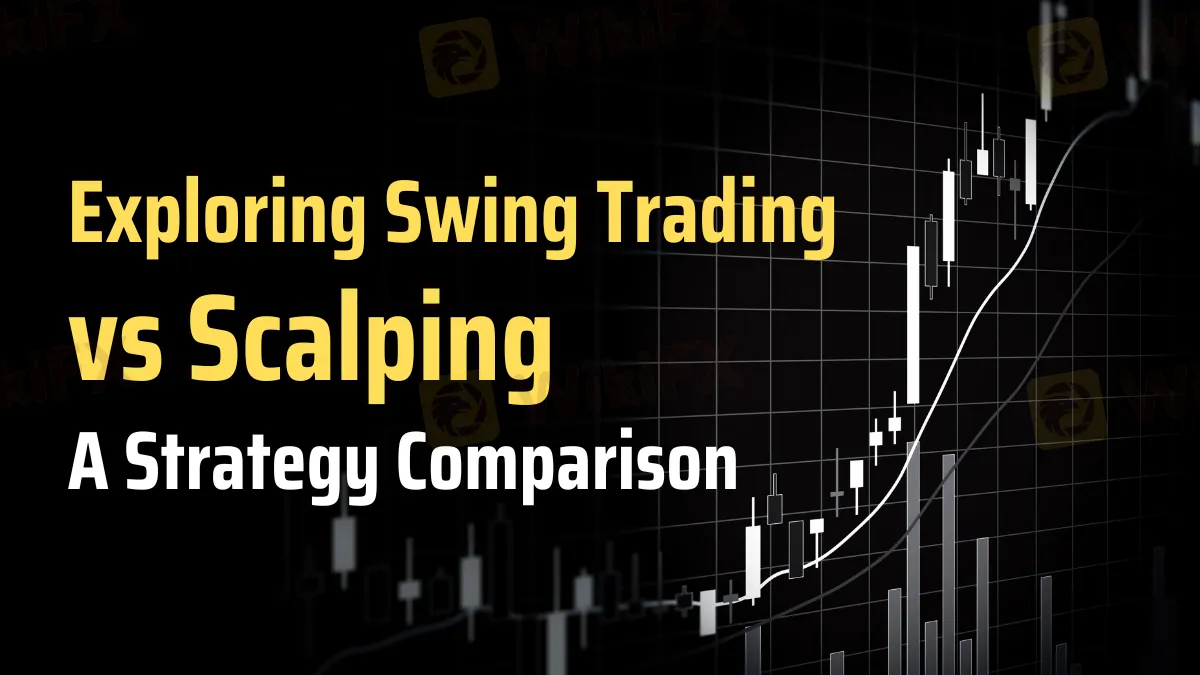简体中文
繁體中文
English
Pусский
日本語
ภาษาไทย
Tiếng Việt
Bahasa Indonesia
Español
हिन्दी
Filippiiniläinen
Français
Deutsch
Português
Türkçe
한국어
العربية
Exploring Swing Trading vs Scalping: A Strategy Comparison
Abstract:Discover the key differences between swing trading and scalping to find the best trading strategy for you.

Swing trading and scalping are frequently contrasted in the world of stock trading for investors. These two distinguished trading strategies cater to a variety of investors with varying time constraints and risk appetites. For any speculator seeking to optimize their approach to the markets, it is vital to comprehend the fundamental distinctions among these strategies.
What is Swing Trading
Swing trading is a way of profiting on expected upward or negative market moves by holding positions in stocks or other assets for many days or weeks. Those who lack the time to devote an entire day to market surveillance but are still seeking substantial profit opportunities will find this approach especially appealing.

A balanced approach between time commitment and prospective returns is one of the benefits of swing trading. By identifying patterns and signals that indicate an impending move, swing traders employ technical analysis to discern favorable circumstances for purchasing and selling. These traders frequently employ stop-loss and take-profit orders to manage their transactions, thereby limiting potential losses and securing profits, because they do not spend the entire day riveted to their screens.
What is Scalping
On the other hand, scaling is a style of trading that stands out for its incredibly brief holding periods, which can occasionally be minutes or seconds. On account of minor price fluctuations that occur throughout the day, scalpers attempt to generate a multitude of small profits. Profiting from swift market gains requires traders to execute timely entry and departure of positions; therefore, this approach requires a significant allocation of time, concentration, and self-regulation.

Scalping is primarily appealing due to its capacity to generate significant profits using a large number of transactions. On the other hand, it requires a significant investment of time and the capacity to execute prompt decisions while under time constraints. To effectively manage their rapid transactions, scalpers generally employ restrictive stop-loss and take-profit levels.
Synopsis of Scalping and Swing Trading
Individual preference, trading objectives, and way of life frequently influence the decision between scalping and swing trading. By permitting participants to strategize their market entry and departure over longer periods, swing trading provides greater per-trade profits and reduces anxiety. Traders with other obligations who would rather not spend the entire day in front of a computer will find this advantageous.
On the contrary, individuals who excel in high-pressure situations and can invest the entire day in trading are well-suited for scalping. Constant market monitoring and prompt decision-making are components of this high-stress strategy. Although daily earnings can be substantial, the frequency of transactions results in lower profits per transaction.
Who Is Appropriate for This Style?
Swing trading may be deemed more accessible to novice traders on account of its moderate tempo and reduced time mandate. This environment provides an opportunity for individuals who are new to trading to acquire knowledge and implement fundamental principles without the stress of having to make hasty judgments. Scalping, conversely, is typically advised for seasoned traders who possess the ability to react swiftly and precisely to changing circumstances while under pressure.
Methods for Integrated Trading
While it is common for novice traders to adopt a single approach, numerous seasoned investors combine the two to optimize their performance across various market circumstances. Depending on the time available and the volatility of the market, this hybrid strategy may enable traders to alternate between swing trading and scalping.
Tools and Documentation for Traders' Education
Those with a greater desire to explore the swing trading approach will find an abundance of manuals and resources at their disposal, all of which provide thorough explanations of the method. By furnishing traders with an extensive comprehension of chart patterns, technical analysis, and the psychological aspects of trading, these tools empower them to render well-informed evaluations.
Similarly, people who want to become scalpers might benefit from adopting specialized training programs and simulation software, which provide a safe setting to enhance their quick-thinking skills. Due to the rapid-fire nature of shearing, which necessitates accuracy and swift reflexes, this training is vital.
The Aspects of Trading Styles That Influence Psychology
Engagement in any trading activity necessitates the resolution of a psychological obstacle in addition to a certain degree of financial expertise. Swing traders are required to possess the fortitude and self-discipline to assiduously await advantageous trading opportunities, even in the face of challenging market conditions. On the other hand, scalpers must be able to quickly adapt to rapid changes in the market by efficiently handling pressure and maintaining concentration for extended periods.
Opting for Appropriate Equipment
For swing traders and scalpers to implement their transactions efficiently, they must have access to reliable instruments. Swinger traders are empowered to conduct in-depth market analyses with the aid of robust charting software and access to extensive historical data. Scalpers demand trading platforms that possess the capacity to proficiently manage a substantial volume of transactions, provide real-time data, and execute orders at an abnormally rapid rate.
In conclusion
Spiking and scalping each present their own set of advantages and difficulties. The time commitment, risk tolerance, and trading expertise of the individual should guide their decision between the two. You might discover, as you accumulate experience, that your trading approach is most effectively suited to a combination of both strategies.
Successful individuals must consistently adapt and learn, regardless of whether they choose the methodical and patient approach of swing trading or the dynamic and fast-paced world of scalping. Maintain wisdom and self-control, and select the approach that most effectively corresponds to your objectives.

Disclaimer:
The views in this article only represent the author's personal views, and do not constitute investment advice on this platform. This platform does not guarantee the accuracy, completeness and timeliness of the information in the article, and will not be liable for any loss caused by the use of or reliance on the information in the article.
Read more

Kraken Offers $105 Fee Credit for FTX Fund Recipients
Kraken offers $105 in trading fee credits to FTX fund recipients, enabling $50,000 in crypto trading on Kraken Pro with zero fees. Secure your funds today!

Good News Malaysia: Ready for 5% GDP Growth in 2025!
Malaysia's economy is on track to sustain its robust growth, with GDP expected to exceed 5% in 2025, according to key government officials. The nation's economic resilience is being driven by strong foreign investments and targeted government initiatives designed to mitigate global economic risks.

Oriental Kopi’s IPO: Worth the Buzz or Not?
Kopi Holdings Bhd, a café chain operator under the brand Oriental Kopi, is gearing up for its listing on the ACE Market of Bursa Malaysia. The company has garnered a positive valuation from Mercury Securities Sdn Bhd, which has assigned a fair value of 68 sen per share, citing strong earnings growth potential driven by outlet expansions and increasing contributions from fast-moving consumer goods (FMCG) sales.

Tradu Introduces Tax-Efficient Spread Betting for UK Traders
Tradu’s introduction of tax-efficient spread betting and groundbreaking tools like the Spread Tracker signals a new era of accessible, competitive, and innovative trading solutions for UK investors.
WikiFX Broker
Latest News
SQUARED FINANCIAL: Your Friend or Foe?
Big News! UK 30-Year Bond Yields Soar to 25-Year High!
High-Potential Investments: Top 10 Stocks to Watch in 2025
Why Is Nvidia Making Headlines Everywhere Today?
Discover How Your Trading Personality Shapes Success
US Dollar Insights: Key FX Trends You Need to Know
FINRA Charges UBS $1.1 Million for a Decade of False Trade Confirmations
BI Apprehends Japanese Scam Leader in Manila
Bitcoin in 2025: The Opportunities and Challenges Ahead
Join the Event & Level Up Your Forex Journey
Currency Calculator






